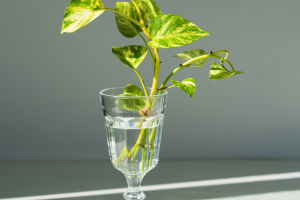Hydrangeas, with their captivating clusters of blooms, have enchanted gardeners and admirers alike for centuries.
These flowering shrubs, belonging to the genus Hydrangea, are known for their large, showy flowerheads and diverse range of colors, making them a beloved choice in gardens around the world.
Originating from various regions in Asia and the Americas, hydrangeas thrive in temperate and subtropical climates. The genus encompasses over 70 species, each with its unique charm and characteristics.
Among the most popular species are Hydrangea macrophylla, known for its bigleaf or mophead flowers, and Hydrangea paniculata, recognized for its conical panicles of blossoms.
Beyond their horticultural appeal, hydrangeas hold symbolic meanings in different cultures. In Japan, they symbolize gratitude, understanding, and heartfelt emotions, often serving as a symbol of apology or appreciation.
In Europe and North America, hydrangeas are admired for their ornamental beauty and are frequently used in floral arrangements, weddings, and landscaping.
Caring for hydrangeas involves understanding their specific needs, such as suitable sunlight conditions, regular watering to maintain soil moisture, and appropriate pruning practices to encourage new growth and maintain plant health.
Hydrangeas prefer morning sun and afternoon shade, especially in hotter climates, as too much direct sunlight can scorch their leaves and reduce flowering. They also benefit from mulching to retain soil moisture and protect their roots from temperature fluctuations.
Gardeners have developed numerous cultivars to enhance the beauty and adaptability of hydrangeas in different environments.
Some notable cultivars include 'Endless Summer', known for its extended flowering season, 'Annabelle', prized for its large, round, white flowerheads, and 'PeeGee' (Hydrangea paniculata 'Grandiflora'), valued for its robust growth and pyramid-shaped flower clusters.
Another fascinating cultivar is 'Limelight', renowned for its lime-green flowers that transition to pink in the fall, offering a unique color palette throughout the seasons.
The color of hydrangea flowers is influenced by the soil's pH level, a unique characteristic that allows gardeners to alter the hues of their blooms. Acidic soils (pH below 6) typically produce blue flowers, while alkaline soils (pH above 7) yield pink or red flowers.
This trait has made hydrangeas particularly appealing to gardeners who enjoy experimenting with soil treatments to achieve different floral displays.
Hydrangeas also play a significant role in ecological systems, providing nectar and habitat for various pollinators, including bees, butterflies, and hummingbirds. Their presence in a garden can enhance biodiversity and support the health of local ecosystems.
Hydrangeas captivate with their stunning blooms, cultural significance, and adaptability to various climates and soil conditions. Whether adorning gardens, serving as floral symbols, or enriching landscapes with their vibrant colors, hydrangeas continue to inspire and delight gardeners and nature enthusiasts worldwide.
This brief exploration underscores why hydrangeas remain a cherished choice for those seeking beauty, versatility, and a touch of floral elegance in their outdoor spaces.
Their ability to thrive in different environments and their rich cultural symbolism make them not just a garden plant but a beloved part of human heritage and natural beauty.
Moreover, hydrangeas have found a place in modern gardening trends, including container gardening and small urban gardens, where their compact size and striking flowers create a significant impact in limited spaces.
Their versatility extends to dried flower arrangements, where their blooms can be preserved and enjoyed long after the growing season has ended.
The enduring appeal of hydrangeas lies in their remarkable diversity, adaptability, and cultural resonance. As gardeners continue to discover new varieties and cultivation techniques, the allure of hydrangeas is set to grow, ensuring that these enchanting flowers will remain a staple in gardens and floral designs for generations to come.
Whether you are a seasoned gardener or a novice looking to add a touch of elegance to your outdoor space, hydrangeas offer an array of possibilities to explore and enjoy.


